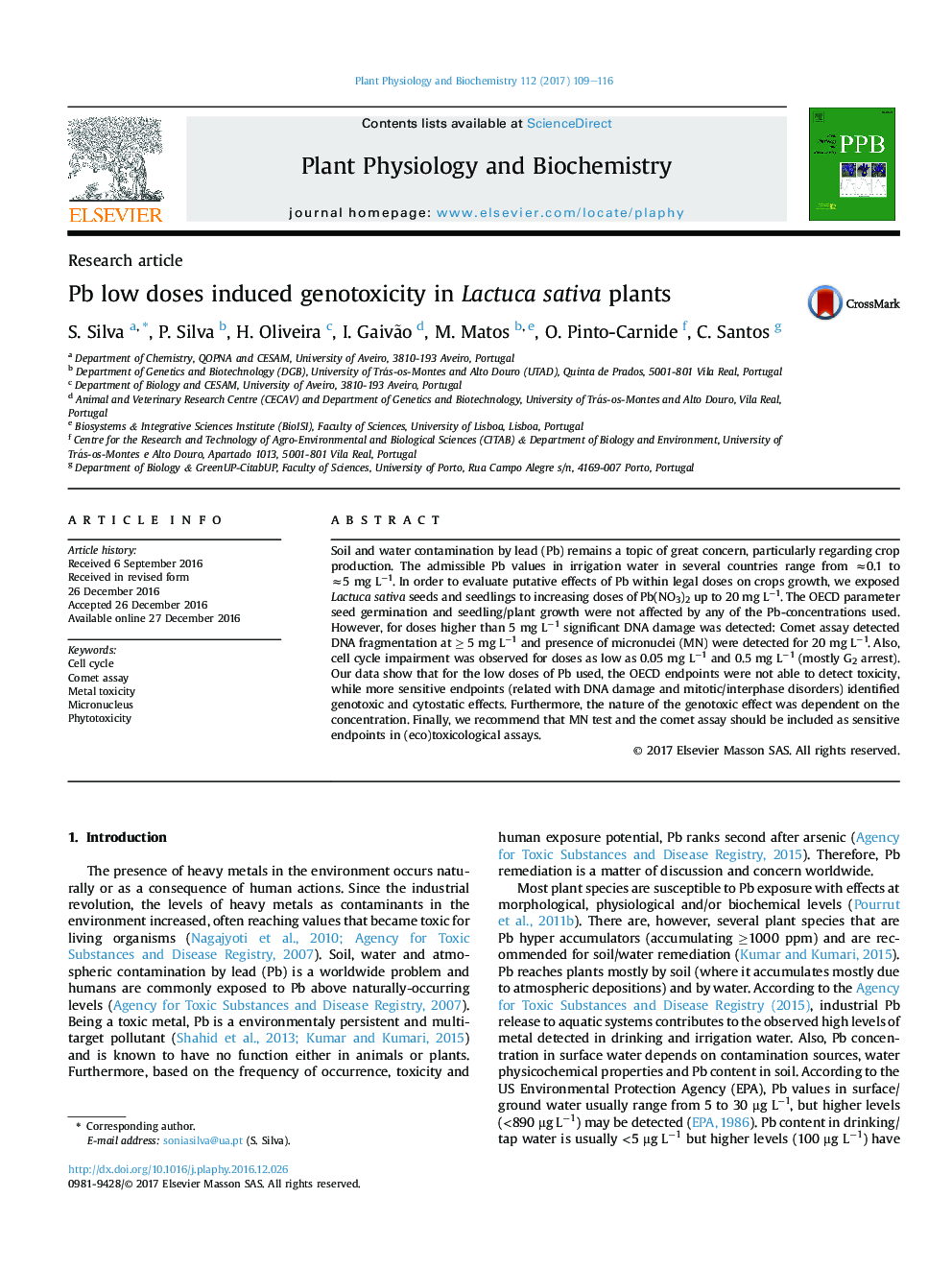| Article ID | Journal | Published Year | Pages | File Type |
|---|---|---|---|---|
| 5515497 | Plant Physiology and Biochemistry | 2017 | 8 Pages |
â¢Exposure to low doses of Pb induced genotoxicity in lettuce.â¢Cell cycle was impaired after exposure to low doses of Pb.â¢MN and comet assay were sensitive and valuable endpoints to assess Pb phytotoxicity.â¢The nature of DNA damage was Pb-concentration dependent.
Soil and water contamination by lead (Pb) remains a topic of great concern, particularly regarding crop production. The admissible Pb values in irrigation water in several countries range from â0.1 to â5 mg Lâ1. In order to evaluate putative effects of Pb within legal doses on crops growth, we exposed Lactuca sativa seeds and seedlings to increasing doses of Pb(NO3)2 up to 20 mg Lâ1. The OECD parameter seed germination and seedling/plant growth were not affected by any of the Pb-concentrations used. However, for doses higher than 5 mg Lâ1 significant DNA damage was detected: Comet assay detected DNA fragmentation at ⥠5 mg Lâ1 and presence of micronuclei (MN) were detected for 20 mg Lâ1. Also, cell cycle impairment was observed for doses as low as 0.05 mg Lâ1 and 0.5 mg Lâ1 (mostly G2 arrest). Our data show that for the low doses of Pb used, the OECD endpoints were not able to detect toxicity, while more sensitive endpoints (related with DNA damage and mitotic/interphase disorders) identified genotoxic and cytostatic effects. Furthermore, the nature of the genotoxic effect was dependent on the concentration. Finally, we recommend that MN test and the comet assay should be included as sensitive endpoints in (eco)toxicological assays.
